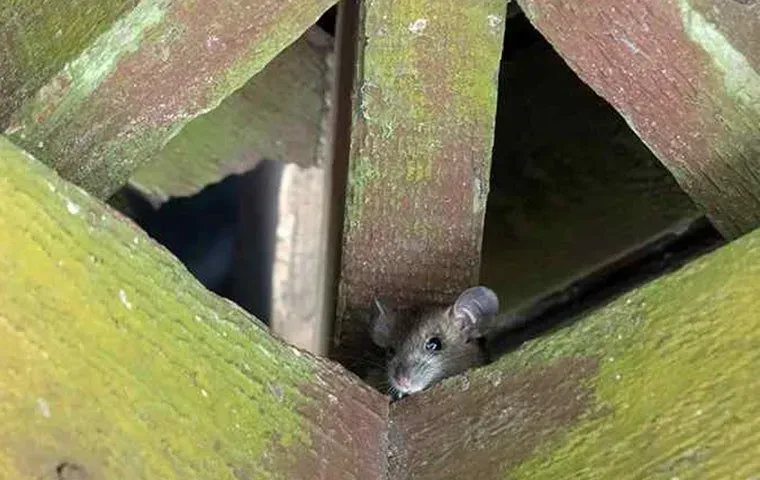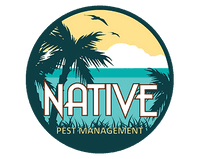Hearing Rats in the Attic? This Is What to Do Next

November 30, 2023
Imagine lying in bed, ready to drift off to sleep, only to hear a series of scrabbling, scurrying sounds coming from above. You’ve got a rat problem. But don’t panic yet; dealing with a rodent infestation might seem daunting, but you can manage it effectively with the proper knowledge.
This article will guide you on identifying signs of a rat infestation, taking steps to mitigate the issue, and when to call in professional pest control services.
Key Takeaways
Strategic trap placement and attractive bait are vital for capturing rats. Preferably, set multiple traps, including high and secluded areas of your home.
Rat poison isn't recommended due to its associated risks. Rats that consume the poison could die in inaccessible places, leading to foul odors and potential health risks.
Different noises and signs in the attic might indicate the presence of various animals like squirrels, bats, raccoons, or birds. Identifying the intruder type is crucial to applying the appropriate measures.
What Are Roof Rats?
There are many rat types out there. But roof rats (A.K.A., black rats), in particular, are notorious climbers, adept at scaling walls and trees to enter attics and houses’ upper floors. Roof rats are notorious for gnawing, often leaving chew marks on electrical wires, drywall, and food packaging in your pantry.
They’re known to be carriers of diseases such as leptospirosis and hantavirus. And are the #1 rat-related pest we encounter in our line of work.
Identifying a Roof Rat Problem
Scurrying Sounds
It could be your first clue to a roof rat infestation if you hear scratching noises, especially at night when everything else is quiet. These critters are primarily nocturnal, so the rustling, chattering, and scurrying sounds they make while scampering about the attic or inside the walls are more noticeable after sunset.
Droppings
One of the most telltale signs of rat infestation is the presence of droppings. Rat feces are dark in color, typically banana-shaped, and about half an inch in length. You’ll often discover them in secluded areas like the attic, basements, and garages or around food sources like your kitchen pantry.
Gnaw Marks
An unmistakable sign of a rat infestation is the presence of gnaw marks. Rats, particularly roof rats, have a penchant for gnawing on virtually everything they come across - from electrical wires, which can potentially cause a fire, to food packaging in your pantry. They’ll even gnaw on hard materials like plastic and drywall.
Why Are Rats a Concern?
Health hazards
Rats carry and can potentially spread diseases, posing a major health risk to you and your family. One of the most well-known diseases they can have is hantavirus, a severe respiratory illness that can be fatal. They can also carry leptospirosis, which can result in kidney damage and meningitis in humans. Furthermore, the fleas that infest rats can also carry diseases and pose additional health risks.
Moreover, the presence of rat droppings and urine can exacerbate asthma and allergies, particularly in children. Therefore, taking immediate action to control a rat infestation is not just about protecting your property but also safeguarding your family’s health.
Household damage and destruction
Few things are as disruptive and destructive as a rat infestation. Here's how they can impact your home:
Structural Damage: Rats, especially roof rats, have a penchant for gnawing incessantly, which can lead to serious structural issues. They can effortlessly bite through drywall, diminishing the structural integrity of your home.
Electrical Hazards: Their sharp teeth can cut through electrical wires, raising the risk of dangerous fires that can quickly escalate to catastrophic levels.
Insulation Degradation: The insulation in your attics and crawl spaces is at risk, as rats can damage it, leading to a spike in your energy bills due to inefficient temperature regulation.
Plumbing Problems: Water pipes are not safe from their gnawing. Rats can cause leaks, precipitating extensive water damage and the potential growth of mold.
Property Damage: Beyond the infrastructure of your house, rats pose a threat to personal property as well, contaminating food sources, chewing through packaging, and ruining valuable personal items.
How to Catch Roof Rats
Use Snap Traps
Snap traps are one of the smartest ways to catch roof rats. These devices employ a spring-loaded bar that snaps shut when an unsuspecting rat triggers the trap mechanism, typically by attempting to eat the bait.
When setting up snap traps, it’s vital to place them in high-activity areas where you’ve noticed signs of rat presence, such as near gnaw marks, along rat runways, or where you’ve discovered droppings. Bait the traps with food items attractive to rats, like peanut butter, bacon, or dried fruit. Wear gloves when handling traps to prevent your scent from deterring the rats.
Remember, for the safety of children and pets, it’s essential to place snap traps in locations that are out of their reach or use tamper-resistant bait stations.
Be Aware of Trap Placement
Strategic placement of traps is crucial in catching roof rats. Remember, these pests are climbers, so they’re likely to be found in high and secluded areas of your home. Focus on setting traps in your attic, upper floors, and along the beams and rafters. You’ll also want to place traps near any signs of rat activity, like gnaw marks or droppings.
Set up traps near the walls, as rats typically move along these areas. Also, consider the direction of the trap’s swing when placing it - the trap should snap towards the wall so that the rat is caught whether it approaches from the front or behind.
Vary Your Bait
The key to successful trapping lies in the right bait. Roof rats are omnivorous and are particularly attracted to food items with strong smells. Therefore, it’s advantageous to vary your bait to attract these pesky rodents effectively. Fruits, berries, and nuts are generally preferable, and try to use fresh, high-quality food whenever possible. Peanut butter can be an excellent choice due to its strong aroma and sticky consistency, which can make it difficult for rats to steal without triggering the trap.
Other effective baits include dried fruit, bacon, and even chocolate. In desperate times, these critters could be attracted to moist pet food. Remember, the placement of the bait is equally important - it should be positioned to cause the rat to engage the trigger plate as it attempts to eat the bait.
Always handle bait and traps with gloves to avoid transferring your scent to them.
Why Rat Poison Isn’t a Good Idea
Rat poison, while seemingly an easy fix, can bring about more problems than it solves.
First, poison does not offer an immediate solution. A rat that consumes the poison doesn’t die on the spot; it has time to retreat to inaccessible places like walls or attics before succumbing, leaving you with a decomposing body to locate and remove. This can lead to a foul odor permeating your home. Even worse, there are potential health risks associated with decaying carcasses.
Second, rat poison poses a significant threat to non-target animals. Pets and wildlife can accidentally consume the poison or a poisoned rat, leading to unintentional harm or fatality. Children, too, are at risk of accidental ingestion.
Lastly, poisoned rats could die inside your property, attracting other pests like flies and maggots to the carcass. Therefore, while rat poison might seem like a straightforward solution, it’s riddled with potential pitfalls and is not recommended for household use.
Other Animals in Your Attic? Here Are Some Tips
If you’re hearing strange noises or spotting unusual signs in your attic, you’re not necessarily dealing with roof rats. Other animals could have made themselves at home in your cozy attic:
Squirrels: You might have squirrels if you hear scampering or rustling sounds during the day, particularly at dawn and dusk. Look for signs of gnawing on wood and electrical wires and small, round droppings.
Bats: You might be dealing with bats if you notice small, black stains around a potential entry point or a pile of droppings underneath. Listen for high-pitched chirping sounds at dusk and dawn.
Raccoons: These nocturnal creatures are larger and thus much louder, causing thumping or walking noises at night. Look for large, tube-shaped droppings and signs of heavy damage, like torn insulation.
Birds: Birds can cause flapping or chirping noises, especially in the morning. Look for nests in the rafters and a large amount of droppings.
Professional Rodent Control in South Florida
At Native Pest Management, we’re dedicated to keeping your home rat-free. Our expert team provides a thorough rat inspection and applies effective, natural treatments tailored to your home. Contact us to fortify your home’s defense against rats today!

Request Your Free Quote
Complete the form below to request your free quote.


















